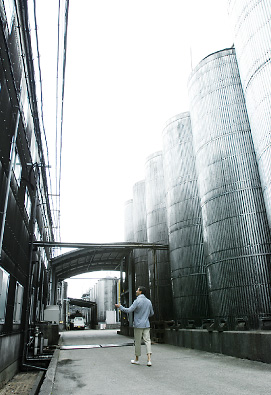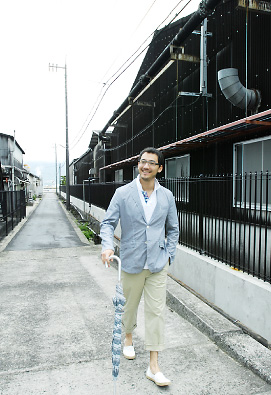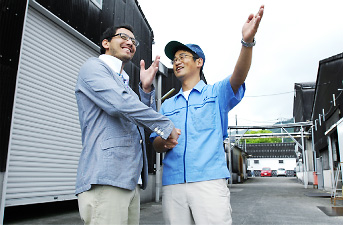| Soy sauce ranks on par with olive oil and somen as a product of Shodoshima. Local production dates back several centuries. During the industry’s heyday from the late 19th century to the mid 1920s, the island had 400 soy sauce factories. Now, however, only about 20 remain. Shimajo Co., Ltd. was established in 1972. “But we don’t make soy sauce,” the plant manager Mr. Yamamoto told me. “We make raw soy sauce that becomes the finished product.” Raw soy sauce? What’s that? |
|
Out in the factory grounds, enormous tanks soar into the sky while inside the plant is filled with automated machinery. “This is a joint brewing plant,” Mr. Yamamoto explained as he led me on a tour. Small soy sauce brewers couldn’t keep up with rapid mechanization after the Second World War so several companies joined together and invested in building a plant with modern equipment. That’s Shimajo Co., Ltd. “We only make ki-age, the raw soy sauce pressed from moromi mash. It’s the main ingredient of soy sauce.” |
|
In other words, ki-age is basically undiluted soy sauce. Shimajo produces ki-age for six island manufacturers. Each one then completes the manufacturing process, adding their own distinctive flavors to create soy sauce, ponzu (soy sauce with vinegar) and other products. “Because ki-age determines soy sauce quality, it’s really the core ingredient,” Mr. Yamamoto continued. “That’s why we approach our jobs with a strong sense of responsibility.” It was clear from his words and the sweat on the young workers’ brows that this work is a labor of love. |


